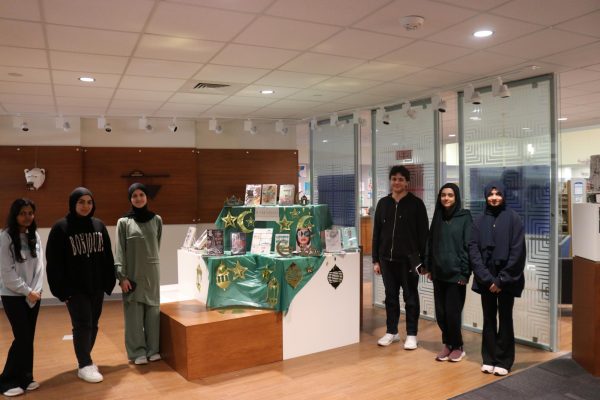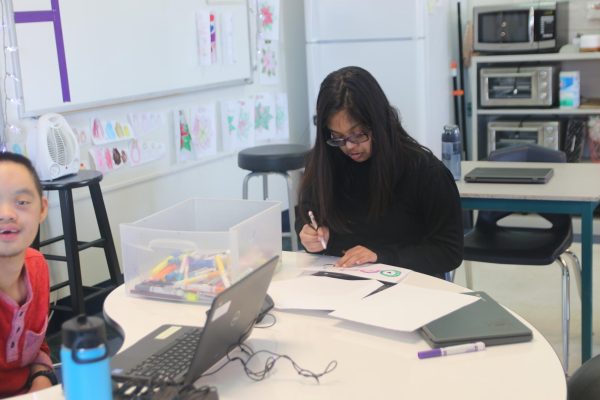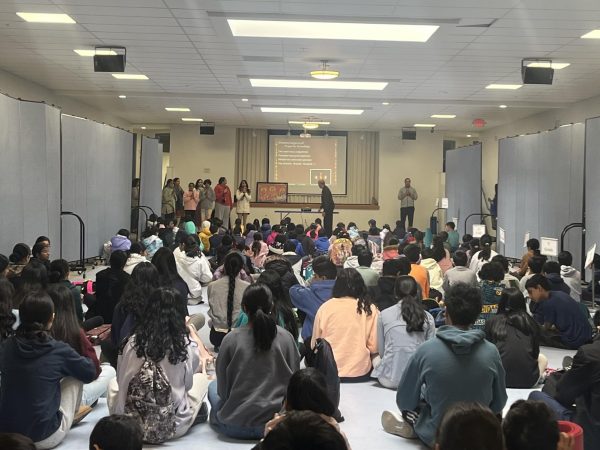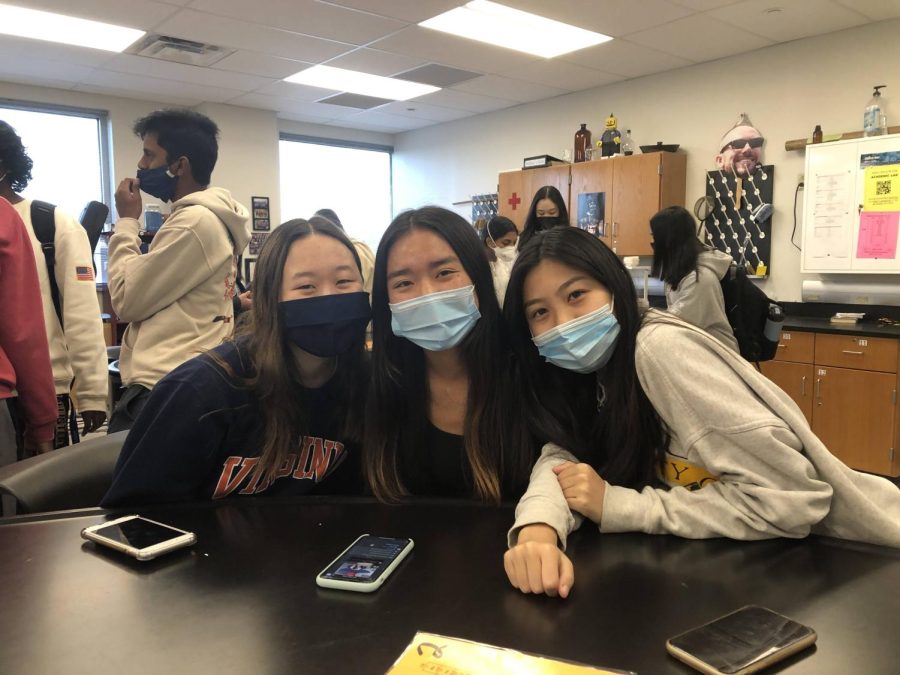May Honors Asian Americans & Pacific Islanders
Media by Jenny Chiu
Alexis Nguyen (left), Joyce Liu (middle) and Emily Zhang (right) pose at an East Asian Student Association (EASA) meeting. EASA co-president, Jenny Chiu, says the club fosters inclusivity for both East Asians and non-Asians.
Every Sunday, freshman Samvida Batchu attends Balvihar, an Indian Sunday school that teaches kids about Indian Culture. They learn about events such as Dandiya, a traditional style of dance involving sticks, and celebrations for holidays such as Diwali.
In her time not spent at Balvihar or school, Batchu is dancing Kuchipudi, an Indian classical dance that she has been practicing since she was 8.
Her Indian heritage plays an essential role in her day-to-day life.
“Partaking in cultural activities is just as important as keeping your culture in your mind everyday,” Batchu said. “Keeping that culture not only connects you to your family more, it also gives you a sense of self, motivation and community.”
Though Batchu was born in the U.S., both of her parents are Indian, making her a first generation American. She is 1 of 24 million people who are Asian American and Pacific Islander (AAPI) in the U.S., according to National Geographic.
According to National Geographic, the AAPI community contains approximately 50 ethnic groups and more than 100 languages.
In 1992, May was declared AAPI Heritage month. The month of May was specifically selected to commemorate both the arrival of the first Japanese immigrants in the U.S. on May 7, 1843, and the large contributions of Chinese Laborers to the transcontinental railroad on May 10, 1869, according to National Geographic.
With the AAPI community being so large, each individuals experience differs from the next. Batchu said that though she takes pride in her culture, being both Asian and American can make her life complicated.
“There are definitely times where I wish I only had one culture to follow,” Batchu said. “Having two cultures means you get more exposure and make more friends, but also makes you feel like you are leading two lives and can never really fit into either culture or community.”
Although it can be difficult,Batchu said she loves her heritage and hopes other fellow AAPI’s can reach a point of similar comfort with theirs.
The student committee for Diversity, Equity, and Inclusion (DEI) works to include representation and equity at MHS and in the district.
Rasel Leschen, junior, is a part of the DEI student committee and is of AAPI descent herself. She is half Thai and half European.
“Being half and half was something I never thought would be a problem, but it is sometimes,” Leschen said. “I feel like I don’t fit in because of what I look like and what people think of me because of it. A lot of people fetishize me because I’m mixed, and it makes me feel like I’m an object.”
Despite this, Leschen said she is proud of her heritage and said she enjoys being a part of DEI, as it works to better the Asian American experience, at least at school.
The committee is a facet of the larger DEI committee for RSD. They’ve coordinated projects such as the Black History Month speaker series as well as the Butterfly project in the hallways.
“I’m glad we have a month to celebrate our heritage,” Leschen said. “I don’t like how everything is limited to a month, though. I would like to be treated like a human and appreciated for who I am for every month of the year.”
Co-leader of the DEI student committee, senior Carson Hanis, echoes this.
“I hope in the future Rockwood will become a leader for inclusive learning in the State of Missouri,” Hanis said. “We represent just under 24,000 students in the greater St. Louis area including representation from over 140 countries, all fifty states, many different languages, cultures, and races. We have a very large world representation in our district and all students should be entitled to a safe environment at school.”
Hanis joined the committee at the beginning of the 2020-2021 school year, inspired by the protests that ensued that summer.
“I wanted to put emphasis on creating safe schooling environments for all students,” Hanis said. “No matter race, sexual orientation, or any other factors that cause a student to be in a ‘minority.’”
The East Asian Student Association (EASA), has similar goals to the student DEI committee.
Senior Jenny Chiu is co-president of EASA at MHS.
“Something I stressed a lot throughout this school year is that everyone is welcome, no matter your race, because culture is not something to gatekeep, but to share,” Chiu said. “A lot of our meetings had a lot more non-east-Asians than there were Asians due to their interest in East-Asian culture.”
Chiu said the inclusion of both East Asians and Non-East Asians in the club creates a sense of allyship that acknowledges the students’ differences, but still fosters inclusivity at MHS.
Though this month is AAPI month, Chiu said her club works toward representation, diversity and inclusion every month of the year.
“Growing up, a lot of us hated everything about our heritage,” Chiu said. “But coming into high school and meeting people who were just like me, I was able to find different ways to be proud of my heritage, instead of ashamed of it.”
Your donation will support the student journalists of Marquette High School. Your contribution will allow us to purchase equipment and cover our annual website hosting costs. You may become a PATRON by making a donation at one of these levels: White/$30, Green/$50, Blue/$100. Patron names will be published in the print newsmagazine, on the website and once per quarter on our social media accounts.
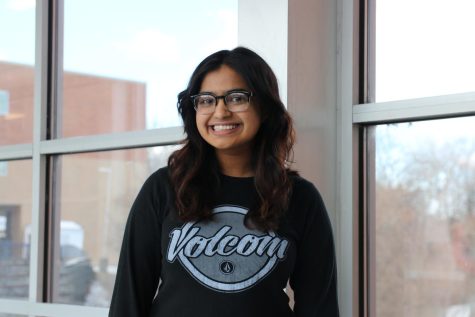
Rue Siddiqui, senior, is the Co-Online Editor for the Marquette Messenger. This will be her third full year on staff. She is also a part of the Politics...



